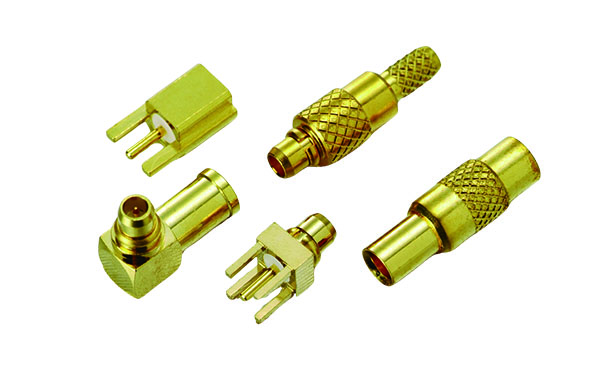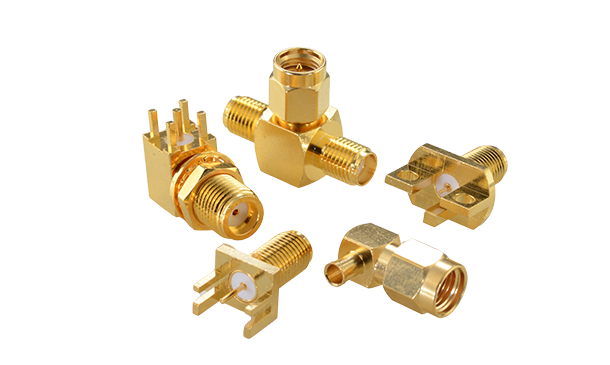- HOME
- Applications
- Blog
- What is 5G Millimeter Wave? Key Differences and Features Over Regular 5G
What is 5G Millimeter Wave? Key Differences and Features Over Regular 5G
25-05-14
5G millimeter wave is a high frequency band within the broader 5G technology spectrum, typically ranging from 24GHz to 100GHz. It delivers ultra-fast speeds and low latency. Compared to conventional 5G, 5G mmWave offers significantly larger bandwidth, enabling download speeds in the multi-gigabit range. It's particularly suitable for high-density urban areas, smart factories, and immersive virtual applications. In this article, we’ll explore the core technical features, differences, and key advantages of 5G millimeter wave technology.
〈Extended Reading:What is high frequency? High Frequency Features and Applications!〉
What Is 5G mmWave and How Is It Different from Regular 5G?
What is 5G Millimeter Wave?
5G millimeter wave (5G mmWave) refers to a specific high frequency radio band used in 5G networks, generally between 24GHz and 100GHz. Unlike traditional mobile frequency bands, mmWave offers ultra-high data rates and ultra-low latency. Theoretically, speeds can exceed 10Gbps. However, due to its high frequency and short wavelength, 5G mmWave signals have weak penetration and are easily affected by buildings, weather, and other environmental factors. As a result, a dense deployment of small base stations is required to maintain stable connectivity.
〈Extended Reading:What is mmWave? Advantages, Disadvantages and Applications!〉
Differences Between 5G mmWave and Regular 5G
5G technology is categorized into three bands: millimeter wave (mmWave), mid-band (Sub-6GHz), and low-band (FR1). Among them, mmWave delivers the highest speed and lowest latency but has the smallest coverage range. The Sub-6GHz band, currently the mainstream 5G frequency, strikes a balance between speed and coverage. Low-band offers the broadest coverage but limited speed improvement. Therefore, 5G mmWave is mainly used in scenarios that demand high-speed data transmission, such as stadiums and large venues. In contrast, everyday mobile networks mostly rely on the Sub-6GHz band.
Why Distinguish Between 5G mmWave and Other 5G Bands?
The distinction between 5G millimeter wave and other bands lies in their use cases and technical characteristics. mmWave features large bandwidth and high speeds but limited signal range, making it ideal for high-density environments with low-latency demands. Sub-6GHz bands have better penetration and broader coverage, better suited for everyday mobile communication. To realize a full 5G experience, a hybrid network architecture that integrates multiple bands is essential.
〈Extended Reading:Explore Microwave Frequency and Their Applications in RF Microwave Connectors〉
Key Features and Advantages of 5G Millimeter Wave
5G mmWave delivers ultra-fast data speeds, high capacity, and low latency, but also comes with certain limitations on transmission range. Here is a breakdown of the core benefits that make 5G mmWave a key player in the future of communication technology:
Ultra-High Speeds and Wide Bandwidth
The bandwidth of 5G mmWave far exceeds that of traditional cellular frequencies, supporting download speeds of up to 10Gbps or more. This enables smooth streaming, cloud gaming, and VR/AR experiences. Compared to 4G and 5G Sub-6GHz bands, 5G mmWave supports much higher data capacity and reducing congestion.
Low Latency and High Reliability
With latency as low as 1 millisecond, 5G millimeter wave is ideal for real time applications. In autonomous driving, for instance, mmWave allows vehicles to receive and process traffic information instantly, improving safety. Similarly, in the field of industrial automation, it supports high speed communication between machines, enabling real time collaboration, improving production efficiency, and reducing errors caused by latency.
Dense Deployment and Short-Range Transmission
Due to the higher frequency and shorter wavelength of 5G millimeter waves, their penetration ability is weaker and they are more easily affected by factors such as buildings, weather, and foliage. It is best deployed in indoor or high-density environments using multiple small cells to ensure reliable coverage and consistent performance.
The Relationship Between 5G mmWave and RF/Microwave Signals
RF (radio frequency) and microwave signals are both part of the electromagnetic spectrum, differentiated mainly by their frequencies. RF signals, with longer wavelengths, are often used in wireless communications and Bluetooth; microwaves, with shorter wavelengths, are common in radar and satellite systems. 5G millimeter wave is a specific frequency band used in 5G mobile communication technology and is part of the radio frequency (RF) microwave spectrum. Based on frequency range, the RF microwave spectrum can be further divided into UHF (Ultra High Frequency), SHF (Super High Frequency), and EHF (Extremely High Frequency), with millimeter waves falling under the EHF category.
〈Extended Reading:Microwave Technology Principles and Applications〉
5G mmWave and Its Connection to RF Connectors
The overall performance of a 5G millimeter wave system is closely tied to the quality of its RF connectors. This is because RF connectors are responsible for transmitting high-frequency signals and maintaining signal stability. Let’s take a closer look at the relationship between 5G millimeter wave technology and RF connectors, and the critical role these connectors play in signal transmission.
Why Are RF Connectors Important?
High-quality RF connectors minimize signal loss, reduce reflection, and ensure low noise levels, thereby improving overall communication efficiency. They also help ensure stable signal transmission between 5G mmWave systems, reducing maintenance costs and enhancing reliability.
〈Extended Reading:What are RF Connectors?〉
How Do RF Connectors Affect 5G mmWave Systems?
If the RF connector is poorly designed or experiences signal attenuation, it is more susceptible to energy loss, which leads to reduced transmission efficiency. In addition, poorly designed connectors or impedance mismatches can cause electromagnetic interference, resulting in noise that degrades signal quality.
Requirements for RF Connectors in 5G mmWave Systems
5G mmWave demands RF connectors that can handle frequencies above 24GHz. Since mmWave base stations are deployed in large numbers, the connectors must also support high-density design. A well designed system helps avoid signal loss, minimizes transmission errors, and ensures accurate data delivery.
〈Extended Reading:The Ultimate Guide to RF Attenuators: Definition, Functions, and Applications〉
How to Choose the Right RF Connector?
5G mmWave networks operate in various environments. Therefore, RF connectors must be selected based on their application. In high temperature environments, connectors with heat resistance are essential. In high-vibration or harsh conditions, connectors with anti-vibration, waterproof, and dustproof features are preferred. Additionally, the choice of raw materials and manufacturing processes can further enhance connector durability, reduce maintenance costs, and ensure greater system stability.
〈Extended Reading:How to Choose RF Blind Mating Connectors?〉
〈Extended Reading:How to Choose the Right RF Adapter? Specifications, Applications, and Selection Guide〉
Conclusion
The evolution of 5G millimeter wave technology has raised the bar for RF connector standards. High quality RF connectors are not only minimized noise and interference but also enable high-speed and low-latency signal transmission. This ensures 5G mmWave systems can deliver peak performance. Huang Liang Technologies has been deeply rooted in the RF and microwave industry for over 30 years, providing high performance RF connectors that support high frequency 5G millimeter wave applications. These RF connectors feature high temperature resistance, vibration resistance, as well as waterproof and dustproof capabilities. Feel free to contact us — we are here to provide professional support and tailored recommendations.
〈Extended Reading:Microwave Communication: The Core Technology of Modern Technology and the Key Role of RF Connectors〉




